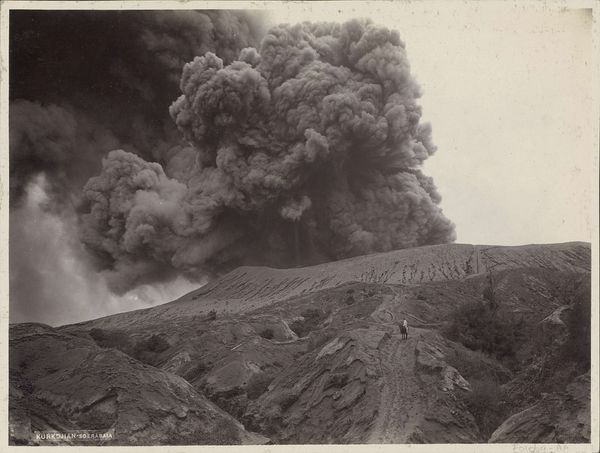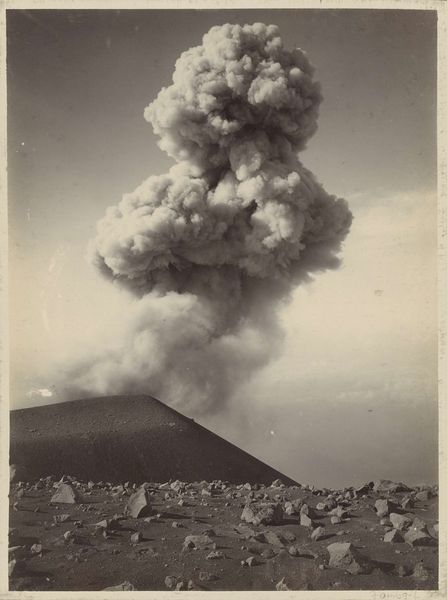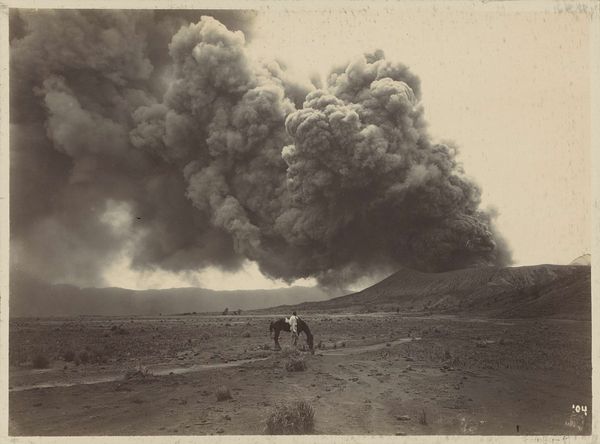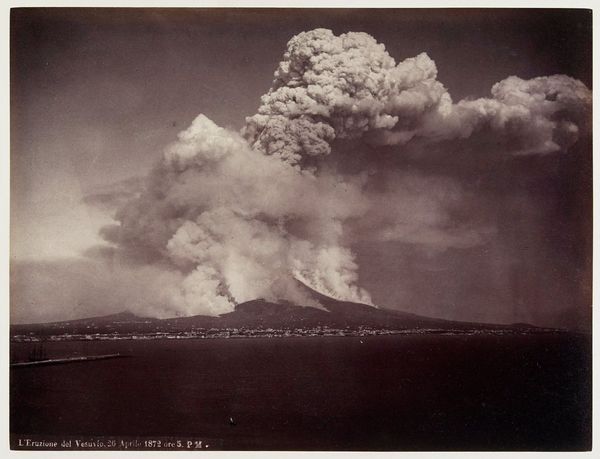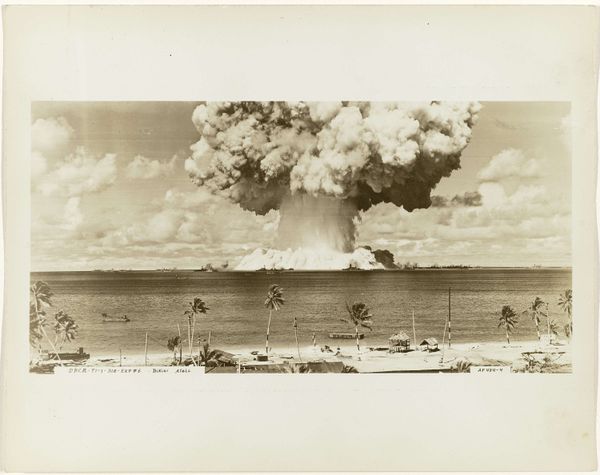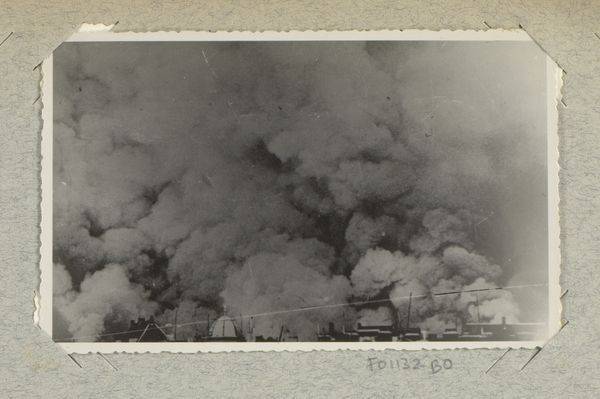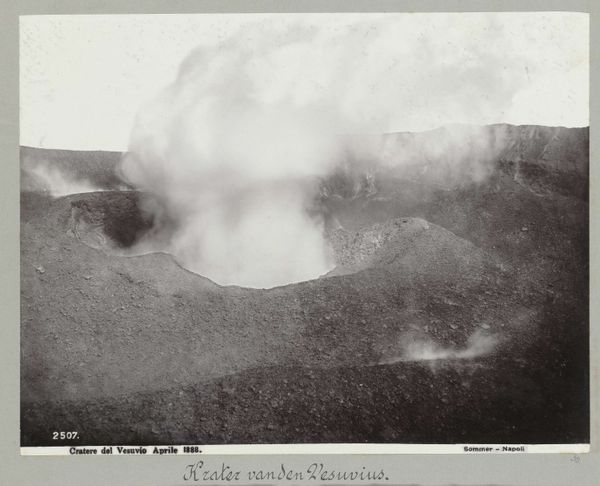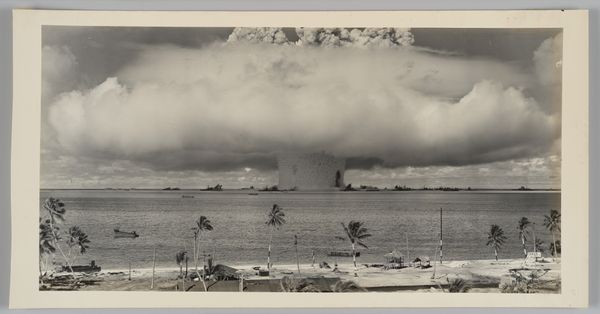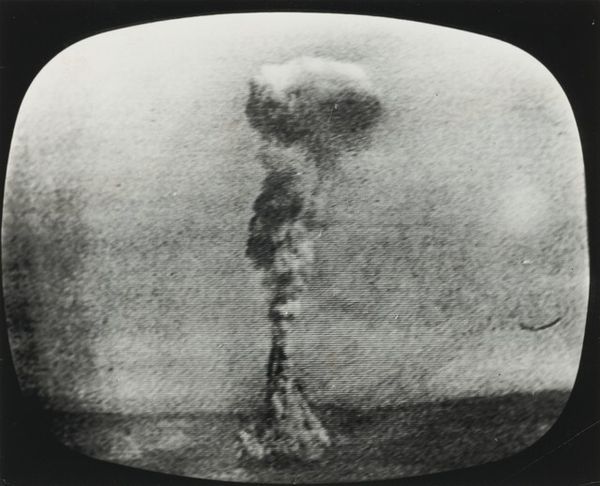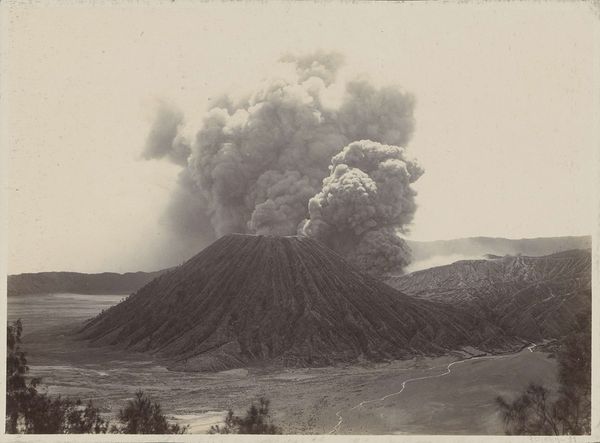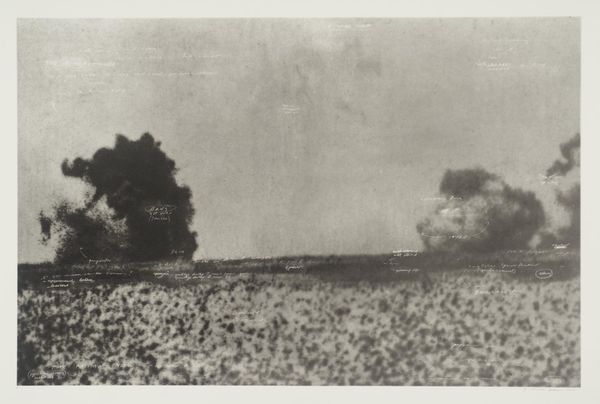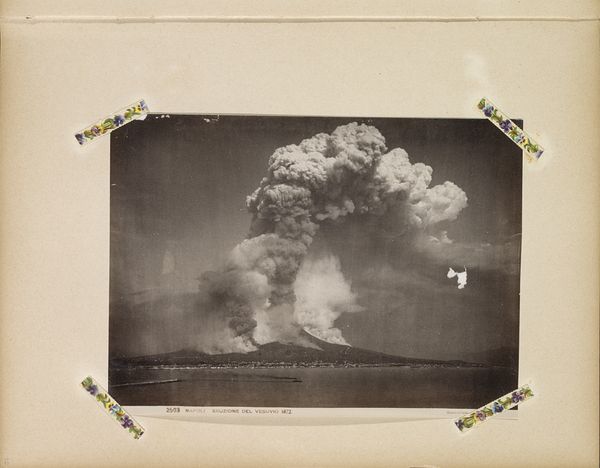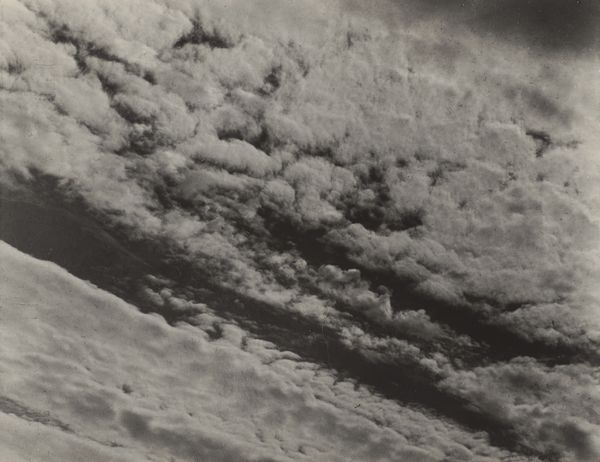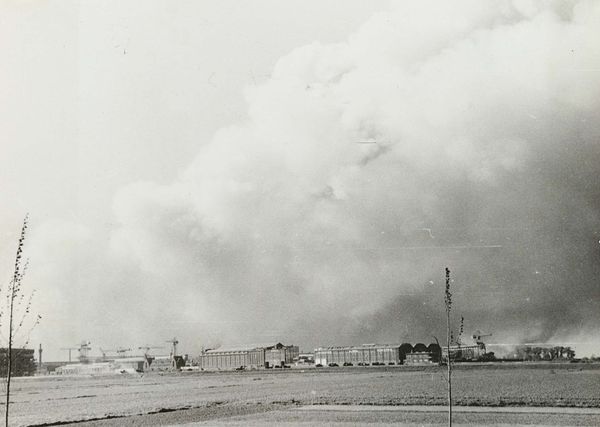
Dimensions: image: 450 x 685 mm support: 540 x 690 mm
Copyright: © Tacita Dean, courtesy Frith Street Gallery, London and Marian Goodman Gallery, New York/Paris | CC-BY-NC-ND 4.0 DEED, Photo: Tate
Curator: Looking at Tacita Dean's "Vesuvio," I'm struck by its sheer drama. It feels both ancient and utterly present. Editor: Yes, there’s an undeniable power here. The volcano becomes this symbol of not just geological force, but also the precariousness of human existence. Curator: I love how Dean layers text over the image – almost like whispered secrets or fragmented memories clinging to the landscape. It evokes a sense of deep time, doesn't it? Editor: Absolutely. It’s a reminder that even something as monumental as Vesuvius is still part of a larger history marked by exploitation and inequality. Curator: It’s a meditation on ephemerality, really, with a smattering of human hubris thrown in. Editor: Perhaps Dean is inviting us to consider the ethical implications that are inherent to our role in this narrative. Curator: An unsettling invitation, to be sure, but one I can appreciate. Editor: Indeed. It stays with you.
Comments
Join the conversation
Join millions of artists and users on Artera today and experience the ultimate creative platform.
tate 7 months ago
⋮
Vesuvio belongs to a portfolio of twenty black and white photogravures with etching collectively entitled The Russian Ending. The portfolio was printed by Niels Borch Jensen, Copenhagen and published by Peter Blum Editions, New York in an edition of thirty-five; Tate’s copy is the fifth of ten artist’s proofs. Each image in the portfolio is derived from a postcard collected by the artist in her visits to European flea markets. Most of the images depict accidents and disasters, both man-made and natural. Superimposed on each image are white handwritten notes in the style of film directions with instructions for lighting, sound and camera movements, suggesting that the each picture is the working note for a film. The title of the series is taken from a convention in the early years of the Danish film industry when each film was produced in two versions, one with a happy ending for the American market, the other with a tragic ending for Russian audiences. Dean’s interventions encourage viewers to formulate narratives leading up to the tragic denouements in the prints, engaging and implicating the audience in the creative process.
